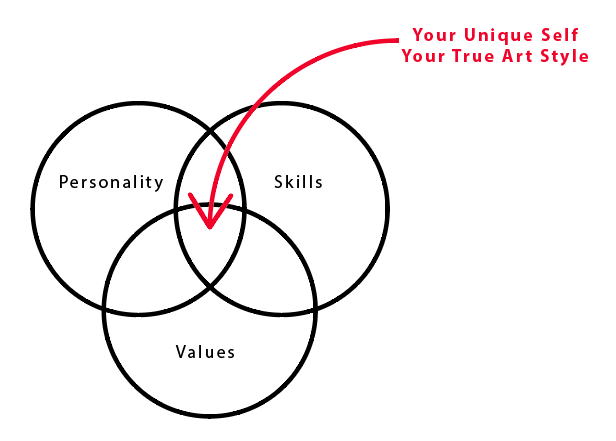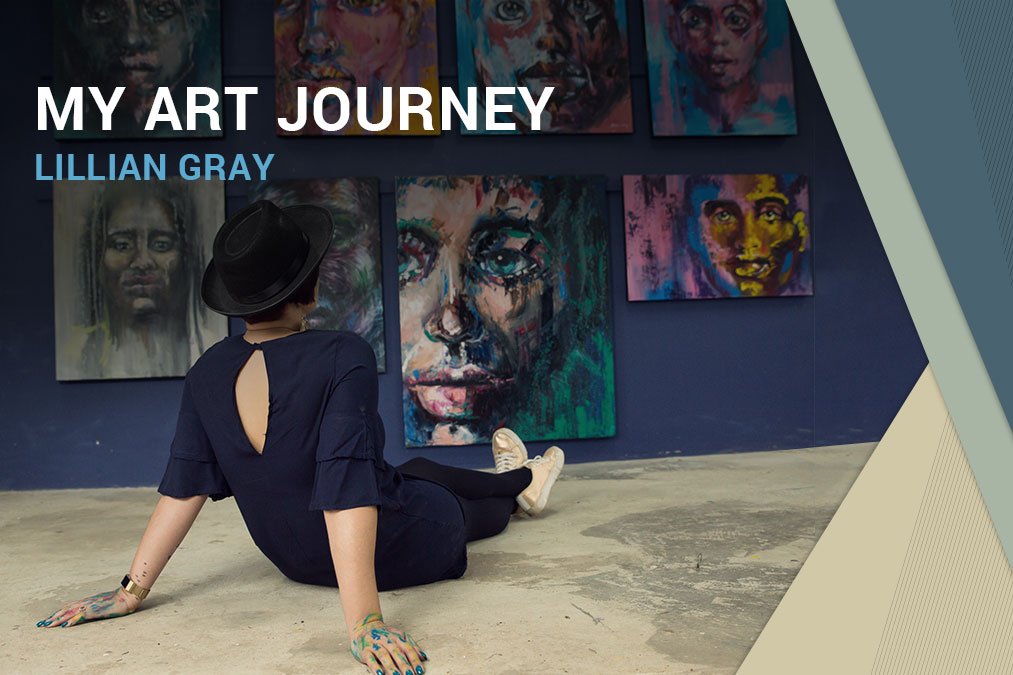No products in the basket.
Creative Mindset
My Art Journey
Brushing up against Modern Art
My art Journey. My defining moment ambushed me on a beautifully bright summers day in Stellenbosch, South Africa. I remember looking up at the clear blue sky and thinking, “I cannot do this.” I was in the second year of my art degree and I had just walked out of final assessments. Here I was, a confident Golden Key student used to straight A’s, I knew I had given my all and yet I’d achieved only a 60% mark. One of my peers had ejaculated on a piece of glass and achieved a Cum Laude (a mark above 80%.). Needless to say, I was devastated.
I remember thinking that if this was art, I wanted no part of it. I vowed that if anyone was ever going to own a Lillian Gray piece, it would have been made with genuine skill and craftsmanship. It would be an investment of enduring value, something I could be proud of.
I called my father and said, “Dad, I am leaving university.” As always, he was the voice of reason, his comforting words washed over me and somehow calmed the storm in my heart. I did finish my university degree but I knew that I wanted a completely different creative vision for my work, going forward.
Starting to paint
Leaving university, I knew I was excellent at fulfilling a brief, following instruction. Increasingly, however, this left me feeling dissatisfied. There was not enough gratification in simply creating what someone else wanted from me. I had to find my own vision, what did I want to create?
Eventually, after working as a commercial artist for a few years, I couldn’t suppress the drive to paint any longer. I had an undeniable urge to create with my hands and no longer on my computer.
The Funnel Effect
I had to become still and really consider what art Lillian liked. Which art movement most resonated with me, personally? Finding a clear direction amongst all the voices in my head was tough. I was drawn to Irma Stern’s work, I loved German Expressionism and also found inspiration in the Impressionists. I delved deep into the manifestos and techniques of these movements, returning to the work I had studied in high school, this coincidentally being the last period I could remember being free in my enjoyment of art.
But then I got stuck. I call it the Funnel Effect. When creatives have so much information in our heads, it chokes in the funnel’s tip and nothing seems to drip onto the canvas. I had to find a way to break through and just paint. I closed my eyes, took a breath and grabbed a brush. I had to just trust my gut and PAINT. And I did.

Finding My Style – Finding Lillian
For a long time, I found myself experimenting, flipping from style to style, trying all kinds of new things. Finding your own style is a vital part of anyone’s art journey.
One day, whilst painting a super realism piece of art, a friend remarked, “Really great technique, but it’s not very you.” In that instant, the penny dropped. This style was beautiful but it wasn’t me. I am a loud, bubbly, the life of the party, always connecting with people, can-get-through-any-situation-kinda-of-person. I had finally discovered that where personality, skills and values meet, there, in that sweet centre, hides the voice of our true artist. If I stick with that, I will always be real with myself and find my unique style.
And so I found my voice. I started my art journey with the abstract portraits that I am now known for. I took all my energy and threw it at the canvas. I found myself using a subdued palette with bursts of exciting colour combinations and I loved it. My paintings started selling.

Going international
My email pings and its a gallery in New York City, inviting me for a solo exhibition. I had to check that it wasn’t a scam, it felt so unreal. After a few Skype meetings, I signed the contract for my first solo exhibition. I was elated.
As part of the exhibition’s requirements, I had to challenge myself to produce large works of art, much bigger than I had ever worked on before. I fell in love with it. The process was fast, physical and expressive, drawing from raw emotion. It was all new and very exciting.
The next international invitation swiftly followed, to the Parallax London Art Fair. Their recommendation was to produce a combination of smaller and larger works, big ones to draw attention and small ones for impulse buys. They requested works in bright colours that would appeal to colour starved Londoners during the gloom of the UK winter.
As I started to plan, I returned to my 3 circles, trying to find that sweet spot. Everything came together, my personality, skills and values and inspiration came bursting through. A bright feast for the eye exploded on the canvas. Bold yellows, oranges, pinks and purples collided and combined into haunting faces. I was in love with them.
What do my contemporary abstract portraits mean?
As someone who has had the privilege of being well travelled, I have always placed a high value on being an international citizen, dedicated to the wellbeing of the planet and all its ethnicities and cultures.
As such, I have always had a keen interest in politics and I believe that we are all here on this planet to help each other and work towards a better future.
Consequently, it has been disheartening to observe the recent rise of Nationalism around the globe. Brexit in Europe, the administration of Donald Trump in the US and Vladimir Putin in Russia and even the political hooliganism of the local EFF party all advocate systems of government that favour and protect only certain groups. I feel like we have regressed in our fight against racism and for equality, globally.
As an artist, when you paint a face in blue, green or purple, the work transcends race. It’s no longer a white person or a black person on the canvas, it’s just a human being, a global citizen. In many cases it also transcends gender. I have seen many clients view my artwork and refer to the image as male when the next person experiences it as female.
I find that recurrent themes in my work are hope, empowerment, conquering fear and overcoming trials and tribulations.
In this vein, the abstract brush strokes and textures add another layer of meaning. My works seem unfinished, because we all somewhat unfinished, a work in progress. The edges are blurred, and some lines are broken because we are all a little bit broken on the inside.
In the words of my dear friend Bev,
“Lillian’s art depicts what it is to be fully human, we all have brokenness which is more often than not obscured from others. This is contrasted by effervescent joy (whatever the source) and the ‘bright’ moments, which makes life worth living.
It can also be said that this vulnerable, broken individual has to negotiate life through a world which is made to look flawlessly beautiful by the facade that others create, even though they are not entirely whole.”
I hope and believe that my art can contribute towards the ongoing struggle for equality and the improvement of global human relations, even if it is just on a small scale.
What’s the story ?
At my art school, I love teaching Art History. I am often called the story-telling artist. I love delving into the background of a particular piece of art, exploring the zeitgeist or “spirit of the times” that it was created in. Because we do not create alone. We are inspired or affected by our surroundings and the events around us. Thus I teach my students to ask these questions when they encounter a new piece of art. What is the story here?
Whether factual or imagined, I find that a story is essential to the experience of an artwork. In my studio, I give each painting a human name. I often ask visitors to my gallery to imagine the life story of the character in the portrait. I love probing people’s minds in this way, allowing them to project their own stories onto my art, encouraging them to be part of the narrative. Sometimes I publish these names and stories on my website together with the painting.
After all, isn’t that what art is, the visual representation of a story? The story of the artist’s engagement with the world?
The truth is that we are all part of this ongoing conversation, characters in this wonderful and terrible story.

